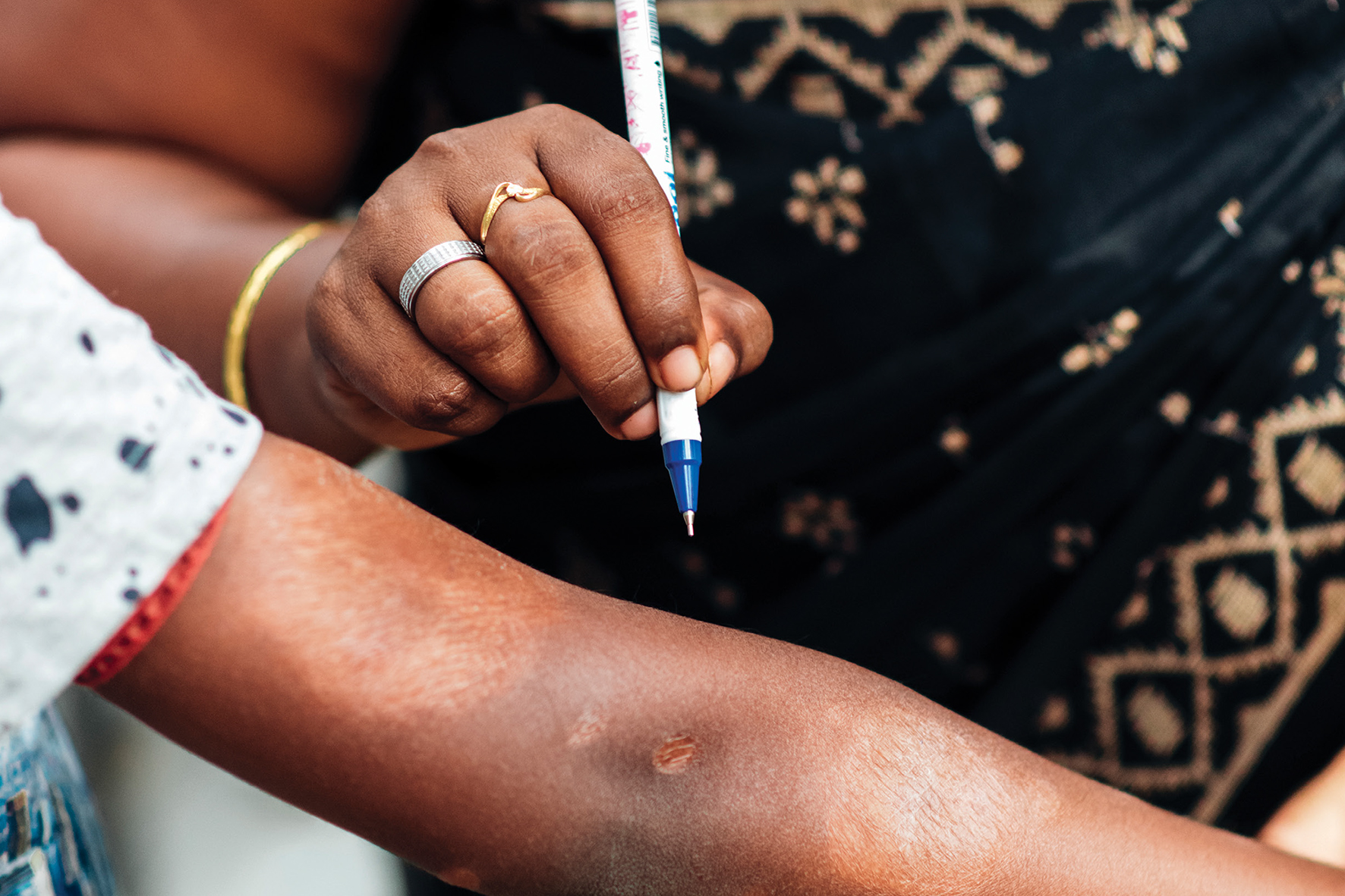Tadros Pavitra is cured of leprosy and leads a life of dignity in the community.
Leprosy (Hansen's disease)
Leprosy, also known as Hansen’s disease, is a chronic infectious disease caused by Mycobacterium leprae. The disease affects the skin, the peripheral nerves, mucosal surfaces of the upper respiratory tract and the eyes. Leprosy is known to occur at all ages ranging from early childhood to old age. Leprosy is curable and treatment during early stages can prevent disability.
Leprosy is transmitted via droplets, from the nose and mouth, during close and frequent contact with untreated cases.
Symptoms may occur within one year but can also take as long as 20 years or even more to occur.
The disease manifests commonly through skin lesion and peripheral nerve involvement. Leprosy is diagnosed by finding at least one of the following cardinal signs: (1) definite loss of sensation in a pale (hypopigmented) or reddish skin patch; (2) thickened or enlarged peripheral nerve, with loss of sensation and/or weakness of the muscles supplied by that nerve; (3) presence of acid-fast bacilli in a slit-skin smear.
Skin lesion has usually a different pigmentation than the surrounding normal skin (less pigmented, reddish or copper-coloured) and may have various aspects (flat, raised or nodules). Skin lesion can be single or multiple with a definite loss of sensation.
Leprosy is a highly variable disease, affecting different people in different ways, according to their immune response. Those at one end of the spectrum, with a high level of immunity, harbour a low number of bacilli and are referred to as patients with PB leprosy. Those with many bacilli in the body are referred to as patients with MB leprosy.
Paucibacillary (PB) case: a case of leprosy with 1 to 5 skin lesions, without demonstrated presence of bacilli in a skin smear.
Multibacillary (MB) case: a case of leprosy with more than five skin lesions; or with nerve involvement (pure neuritis, or any number of skin lesions and neuritis); or with the demonstrated presence of bacilli in a slit-skin smear, irrespective of the number of skin lesions.
Early diagnosis and complete treatment with multidrug therapy (MDT) remain the key strategies for reducing the disease burden of leprosy.
The 2018 Guidelines for the diagnosis, treatment and prevention of leprosy published by WHO, recommends the same 3-drug regimen with rifampicin, dapsone and clofazimine for all leprosy patients, with a duration of treatment of 6 months for PB leprosy and of 12 months for MB leprosy.
Recommended Treatment Regimens




